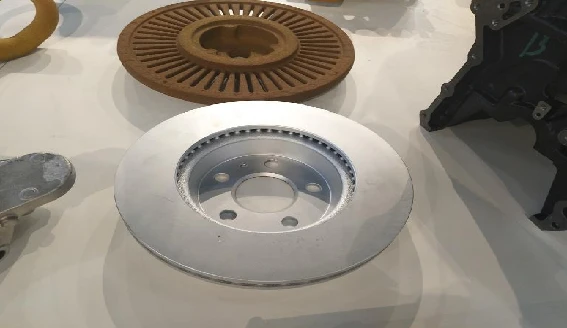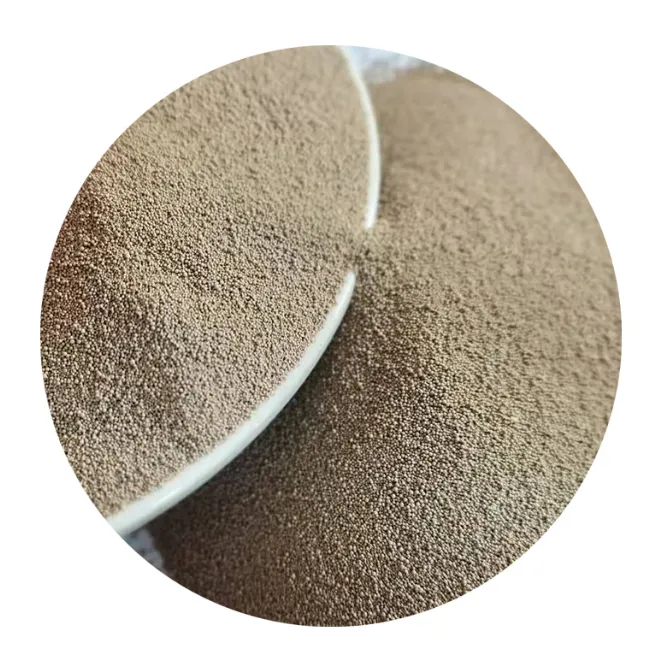- Fundamentals of fine casting sand
composition - Performance metrics and technical specifications
- Die versus sand casting comparison analysis
- Permanent mold versus sand casting differentiation
- Manufacturer technology comparison tables
- Industry-specific application solutions
- Implementation case studies across sectors

(fine casting sand)
Precision Engineering with Fine Casting Sand Solutions
Fine casting sand represents the cornerstone of precision metal casting operations worldwide. Composed primarily of silica (SiO2) with grain sizes between 106-212 microns, this specialized material maintains dimensional stability at temperatures exceeding 1600°C. Foundries require AFS fineness numbers from 65 to 100 for intricate castings, with permeability ratings above 100 ensuring proper gas venting during pouring. Advanced binding systems like phenolic urethane and sodium silicate have reduced binder requirements to 0.8-1.2% by weight while increasing tensile strength to 250-400 psi. Modern formulations achieve thermal conductivities of 0.5-1.0 W/m·K, balancing heat transfer and solidification control. Industry adoption continues growing at 5.7% CAGR as manufacturers recognize sand casting delivers 99.3% dimensional accuracy in complex geometries that alternative methods struggle with.
Premium sands demonstrate measurable advantages through rigorous quality metrics. Surface finish capabilities now reach 150-250 µin Ra with optimized sand blending, approaching machining-grade results without secondary operations. Specialized additives including zircon, chromite, and olivine enable application-specific enhancements: zircon delivers 60% better chilling characteristics for thin sections while chromite withstands 1800°C for stainless steel pours. Advanced permeability control maintains laminar metal flow at 2.4-3.6 m/s pouring speeds. Modern foundries achieve 30:1 reclaim ratios through thermal regeneration, reducing new sand consumption by 94%. Collapsibility enhancements prevent hot tearing defects in aluminum alloys where permanent molds cause 37% more rejects. Finely tuned distribution curves optimize particle packing density, reducing metal penetration defects by 80% compared to conventional sands.
Understanding casting methodology differences remains critical for process selection. Die casting relies on high-pressure injection into reusable steel molds, enabling rapid production of 40-100 parts/hour. However, tooling investments average $75,000-$150,000 with limited design modifications. Permanent mold processes using reusable metal tooling achieve near-net-shape results ideal for medium volumes but restrict geometrical complexity. Sand casting provides unparalleled flexibility - patterns cost 86% less than die tooling while accommodating design adjustments within 48 hours. Production lead times shrink by 65% compared to permanent mold setups. While die casting achieves surface finishes of 64-100 µin Ra, fine casting sand delivers 125-250 µin Ra with superior dimensional stability across large components exceeding 800kg.
Comparative analysis reveals sand casting's advantages in complex applications. While permanent mold casting achieves 15-20% faster solidification rates, it exhibits 45% higher scrap rates on intricate designs than sand methods. Component weight comparisons show sand casting accommodates parts 200-400% heavier than typical die or permanent mold limits. Production economics favor sand: permanent mold tooling costs average $8,000-$50,000 versus $1,200-$15,000 for quality sand patterns. Temperature resistance proves critical - permanent molds withstand 300-1000 cycles before degradation while specialized sands endure 1800°C repeatedly without degradation. Fine casting sand delivers crucial benefits in porosity control with permeability rates precisely calibrated to vent gases that cause blowholes in permanent mold processes.
| Manufacturer | Binder Technology | Thermal Stability | Reclaim Rate | Permeability Range | Surface Finish (µin Ra) |
|---|---|---|---|---|---|
| HA-International | Phenolic Urethane (VOC-Free) | 1800°C | 98% | 120-250 | 125-180 |
| ASK Chemicals | Silicate-CO2 Hybrid | 1750°C | 96% | 90-220 | 150-200 |
| Foseco | Bio-Inorganic Polymers | 1825°C | 92% | 140-300 | 130-170 |
| IMERYS | Zircon-Reinforced Blends | 1850°C | 85% | 110-280 | 120-160 |
Material engineers tailor solutions across industries through customized formulations. Aerospace applications demand zircon-based sand blends with controlled expansion rates below 0.3% at 1400°C to maintain turbine blade tolerances within ±0.05mm. Automotive foundries utilize high-permeability (>150) olivine compositions reducing gas-related defects in engine blocks by 75%. Marine components employ chromite mixes resisting metal penetration in large propeller castings over 5 tons. Medical implant manufacturers specify 95-105 AFS grain fineness for titanium orthopedic devices requiring 500-700 µin surface finishes. Recent innovations include ceramic-enhanced sand cores producing coolant passages with 0.8mm diameters previously unobtainable through conventional methods. Foundries now create hybrid binder systems delivering 22 minute worktimes for complex assemblies with rapid 28-minute curing cycles.
Transforming Industries Through Advanced Fine Sand Applications
Leading manufacturers document significant operational improvements using optimized fine casting sand systems. Caterpillar reduced machining allowances by 42% on hydraulic valve bodies after implementing 95-105 AFS chromite-silica blends with phenolic urethane binders. Energy company Sulzer decreased casting porosity rejection rates by 91% on pump impellers after switching to zircon-enhanced sand with controlled 160-170 permeability. Automotive supplier ZF eliminated 87% of surface finishing operations on transmission cases using engineered sand achieving 150-175 µin Ra as-cast quality. Case studies confirm pattern wear decreased by 67% when transitioning from 70-80 AFS to precisely calibrated 90-100 distribution sands. These measurable results validate why global manufacturers increasingly leverage fine casting sand technology for complex components requiring superior dimensional stability and surface quality.

(fine casting sand)
FAQS on fine casting sand
Q: What is fine casting sand and its role in sand casting?
A: Fine casting sand is a high-quality, tightly-grained sand used in sand casting to create detailed molds. It ensures smooth surface finishes and precise replication of complex patterns. Its uniform particle size minimizes defects in the final cast product.
Q: How does die casting differ from sand casting?
A: Die casting uses reusable metal molds and high pressure to inject molten metal, ideal for high-volume production. Sand casting relies on expendable sand molds for larger, low-to-medium volume parts. Fine casting sand is critical in sand casting for achieving intricate details.
Q: Why is fine casting sand not used in permanent mold casting?
A: Permanent mold casting employs reusable metal molds, eliminating the need for sand-based molds. Fine casting sand is specific to sand casting, where temporary molds are destroyed after each use. This distinction makes sand casting better for complex shapes but slower for mass production.
Q: What are the cost differences between sand casting and die casting?
A: Sand casting has lower initial tooling costs but higher labor expenses due to manual mold creation. Die casting requires costly metal molds but offers faster, automated production. Fine casting sand adds value in sand casting by reducing post-processing needs for intricate designs.
Q: Which process offers better surface finish: sand casting or permanent mold casting?
A: Permanent mold casting typically provides smoother surfaces due to reusable metal molds. Sand casting, even with fine casting sand, may require post-machining for similar finishes. However, fine casting sand improves surface quality compared to coarser alternatives.
Next:Lost Foam Casting Examples Precision Solutions for Industrial Parts
